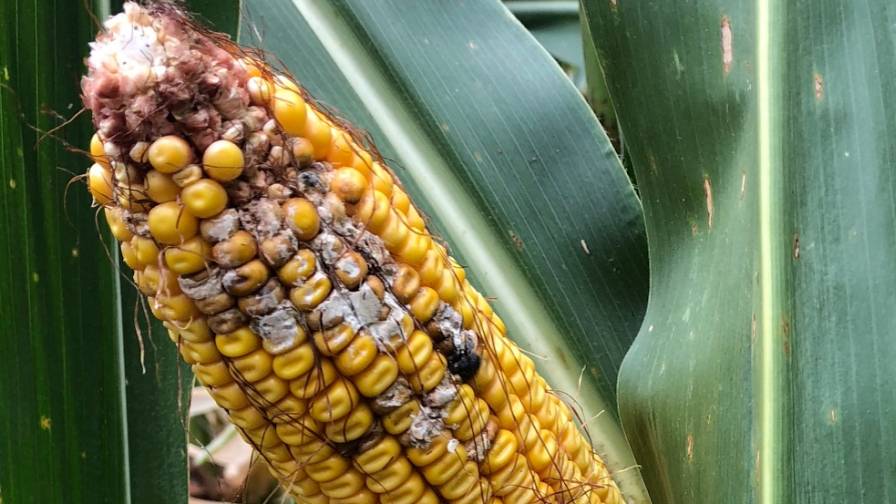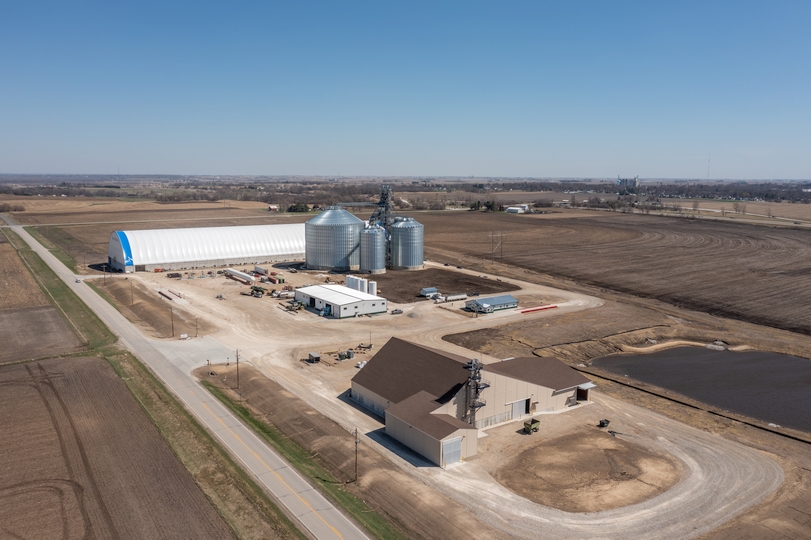TFI Recognizes Michigan, Maryland Farms For 4R Stewardship
As farming practices increasingly attract interest from the general public, two farmers are ensuring they meet public approval. They use proven management practices that focus on improving soil quality and maintaining a quality natural environment. In fact, getting the right nutrients to where they belong and in the right amounts when they’re needed enables them to improve yields while protecting soil and water.
Temple Rhodes’ Chestnut Manor Farms is on Maryland’s Eastern Shore where the public can easily observe how he farms. He welcomes the interest. He’s turned the 2,200-acre corn and soybean operation into a model for economically and environmentally sound best management practices (BMPs). He also raises beef cattle and runs a straw baling business that caters to mushroom growers.
Iott Seed Farms, Inc., is located near Kalkasa, MI. The fifth-generation business is lead by brothers Dennis and Greg Iott. They’re supported by their nephew, Bryan Fischer and longtime employee, Dan Marcusse. About 500 acres of their land is committed to seed potatoes which are sold to growers who raise potatoes for the potato chip market. 250 acres are planted to wheat and the remaining 650 acres are planted to rye, sorghum sudangrass and other cover crops as part of their three-year rotation.
Rhodes and Iott were named as 4R Advocates by The Fertilizer Institute for implementing BMPs in its 4R Nutrient Stewardship program. It offers guidelines on applying fertilizer at the right source, at the right rate, at the right time, and in the right place.
“4R practices consider the complete suite of nutrient management options, said Scott Murrell, director of the North central region in North America, with the International Plant Nutrition Institute. “Balanced nutrition is also key, meaning that farmers ensure all nutritional needs of crops are addressed. Following 4R practices increases the probability that all applied nutrients will be more effectively used by crops.”
Success In Maryland
Along the shores of the Chesapeake Bay near Centreville, MD, Rhodes is improving his farm’s productivity while preserving soil, water and wildlife. He does so for three reasons:
- He doesn’t want to spend fertilizer dollars ineffectively.
- He relies on quality fertilizers to enrich his soils so they can grow the healthiest crops possible.
- He’s an avid outdoorsman, so he’s in tune with the importance of taking care of the soil and water resources for him, his family and the general public.
A strip-till planter Rhodes built places nitrogen, phosphorus and potassium eight inches below the surface for corn and soybeans. That puts nutrients right into the root zone so they’re readily accessible to plants. It also eliminates the prospects of runoff and volatilization.
In addition to the environmental benefit of putting the right nutrients in the right place, it pays off with better yields.
“By using the same amount of fertilizer smarter than before, we’re able to grow a better crop,” Rhodes said. “Our yield increases prove it works.”
He measured an 18.6-bushel per acre advantage of corn compared to standard no-till production in 2012. Last year, that advantage was 14.2 bushels per acre.
Timing is important, too. Rhodes split-applies fertilizer on corn, placing it about four inches beneath the surface just prior to when the crop approaches peak nutrient demand.
No matter when it’s done, nutrient application is site-specific, guided by GPS-linked soil maps that ensure Rhodes matches the right fertilizer rates to reflect the yield potential of each portion of each field.
Seed Potatoes Respond Positively
The same passion for modern agriculture practices drives operations at Iott Seed Farms.
“Quality and uniformity are critical to a successful seed potato crop,” Dennis explained. “Nobody wants big seed potatoes. There’s the same number of eyes on large and small ones. We strive for a large number of small potatoes. If there’s a limiting nutrient to a potato plant, it’ll stop growing. Plus, we have a short growing season, so we don’t have time to waste.”
Since the beginning, the Iotts have applied the management practices outlined in the 4R Nutrient Stewardship program. They’re especially keen on soil testing.
“Soil testing is essential, it gives us the basic information we need,” Dennis said. “Not testing soil would be like taking a trip without a gas gauge in your car.
“There’s more variability in a field than people realize,” he added “Soil sampling is a lot of work, but with GPS-based grid sampling, we’re able to meet specific nutrient needs and not apply fertilizer based on averages.”
Testing is followed by discussions about the right nutrient sources based on a nutrient budget and units of the various nutrients the crop will need. Because of the low CEC soils, Iotts often use slow-release and stabilized nitrogen fertilizers, which, similar to Rhodes’ operation, help eliminate nitrogen loss from leaching, denitrification and volitization.
“A good share of our nitrogen goes on after the potatoes are up,” Dennis said. “We cultivate it in immediately to make sure we don’t waste or lose any. As soon as the potatoes are harvested, we plant a cover crop and capture the nitrogen that’s left.”
In addition to using soil tests to guide nutrient application, weekly plant tissue analyses begin two weeks after potato plants emerge. The Iotts and specialists from their ag retailer meet each Tuesday to review data. If deficiencies are present, foliar applications get nutrient levels in check.
With the help of their retailer, the Iotts are creating a database of four years’ worth of tissue sample results. This will give them a better look at how their nutrient management strategies are working over time and offer insight into any adjustments that might be made.
“A forward-thinking, proactive aspect of 4R Nutrient Stewardship is that is focuses on all major goals of nutrient management: economic, social and environmental,” Murrell said. “It helps balance farmer profitability with practices that help create long-term sustainability and the food security needed for growing societies.”
Results demonstrate the 4R principles are working well. Over the past four years, yield uniformity has improved, consistently reaching yield goals on all acres. Previously, there could be 15% to 20% variability year to year. In addition, their focus on balancing soil nutrients has greatly minimized potato scab, a disease that can harm the crop and profits.
“Our customers need good, sturdy seed potatoes,” Dennis said. “We need healthy plants. If we don’t get the yields, we can’t sustain things financially. It’s like that car on vacation — you’ve got to have enough gas to get where you’re going. Following the 4Rs helps us keep that tank full.”
In the end, potato chip consumers are glad Iott “keeps his tank full” just as Rhodes’ neighbors appreciate that he too, protects their shared environment.
Applications are now being accepted for the 2015 4R Advocate Program. Entries are due on November 10, 2014. A nomination form, information about past winners, and additional details on the program are available here.






